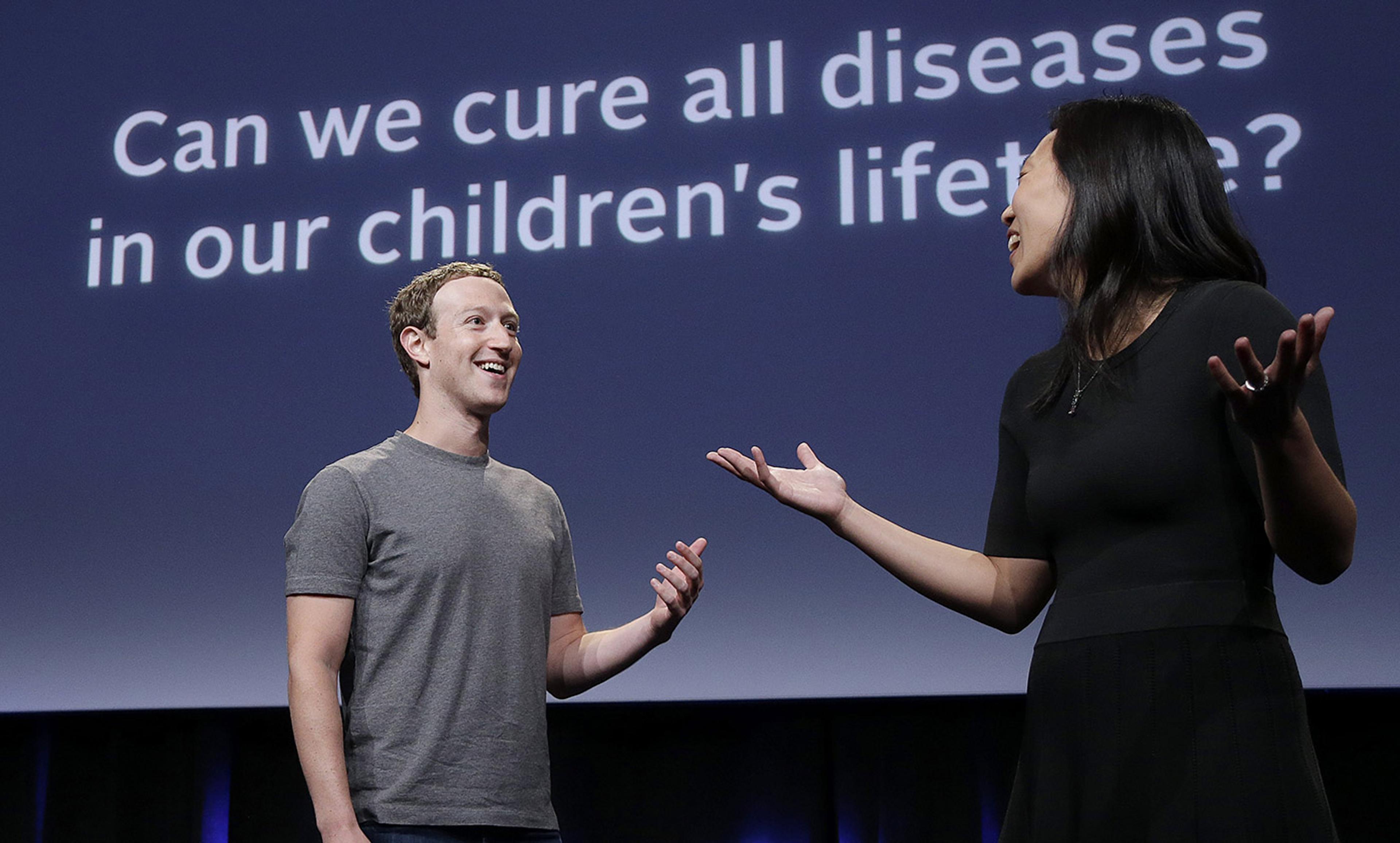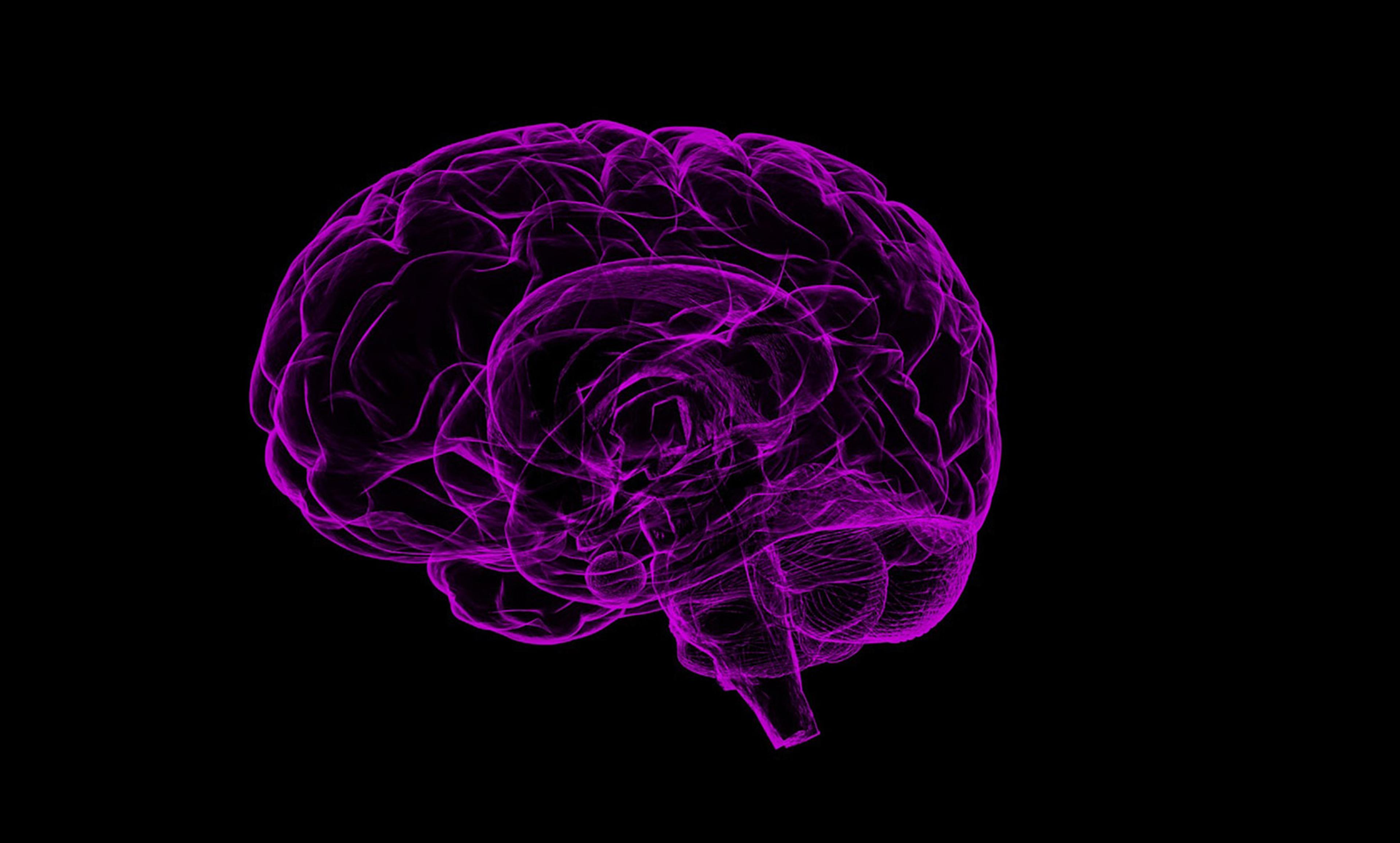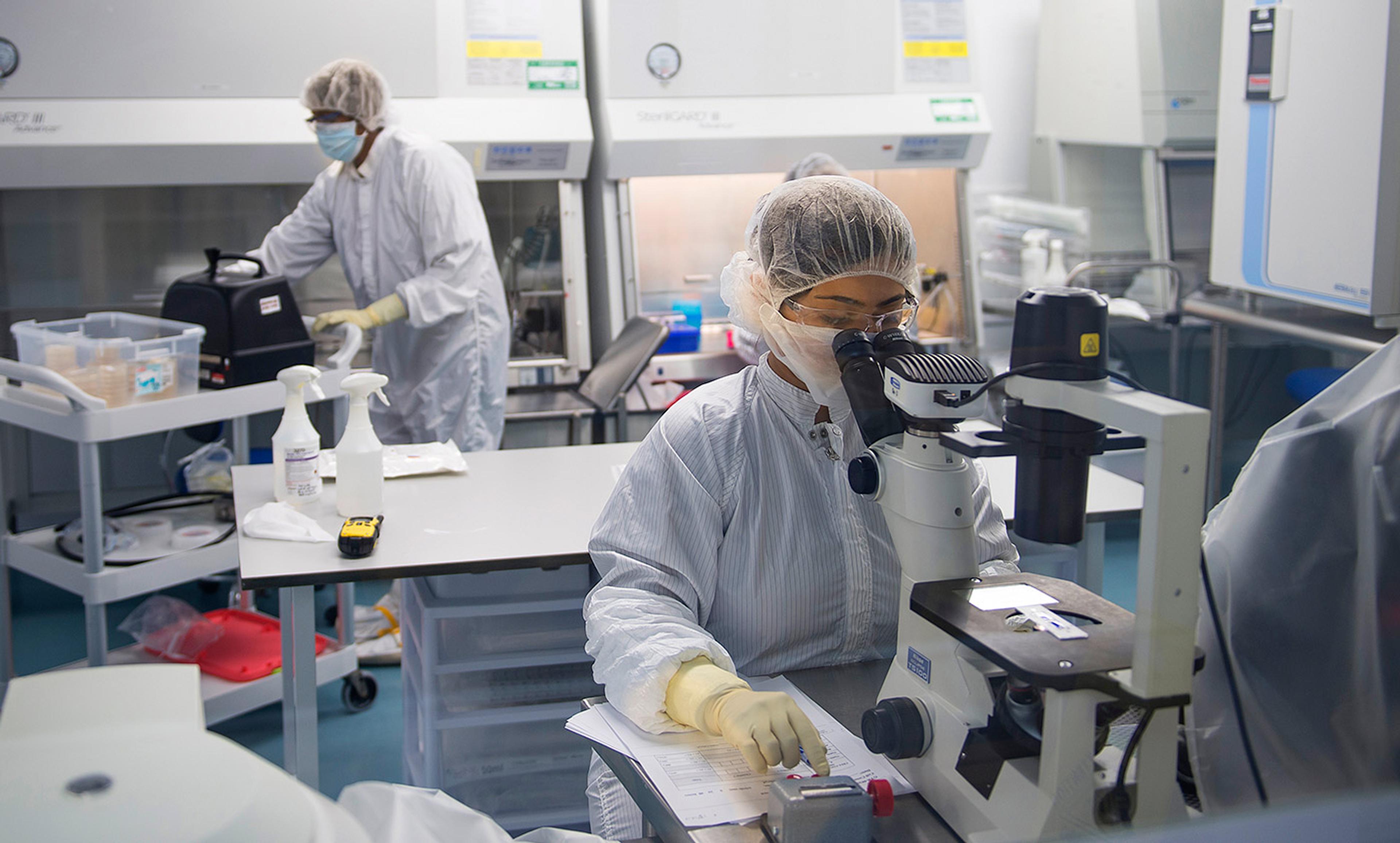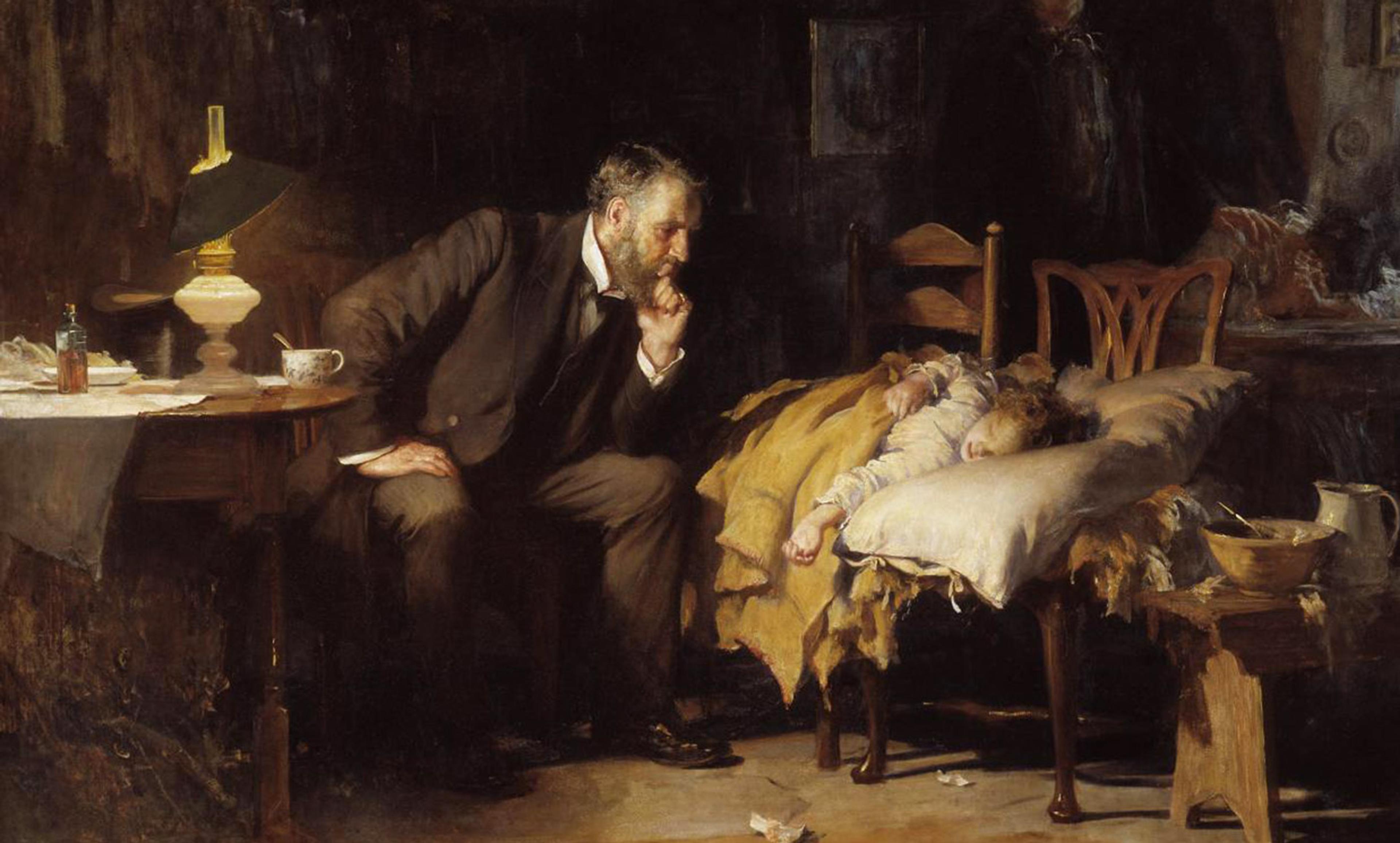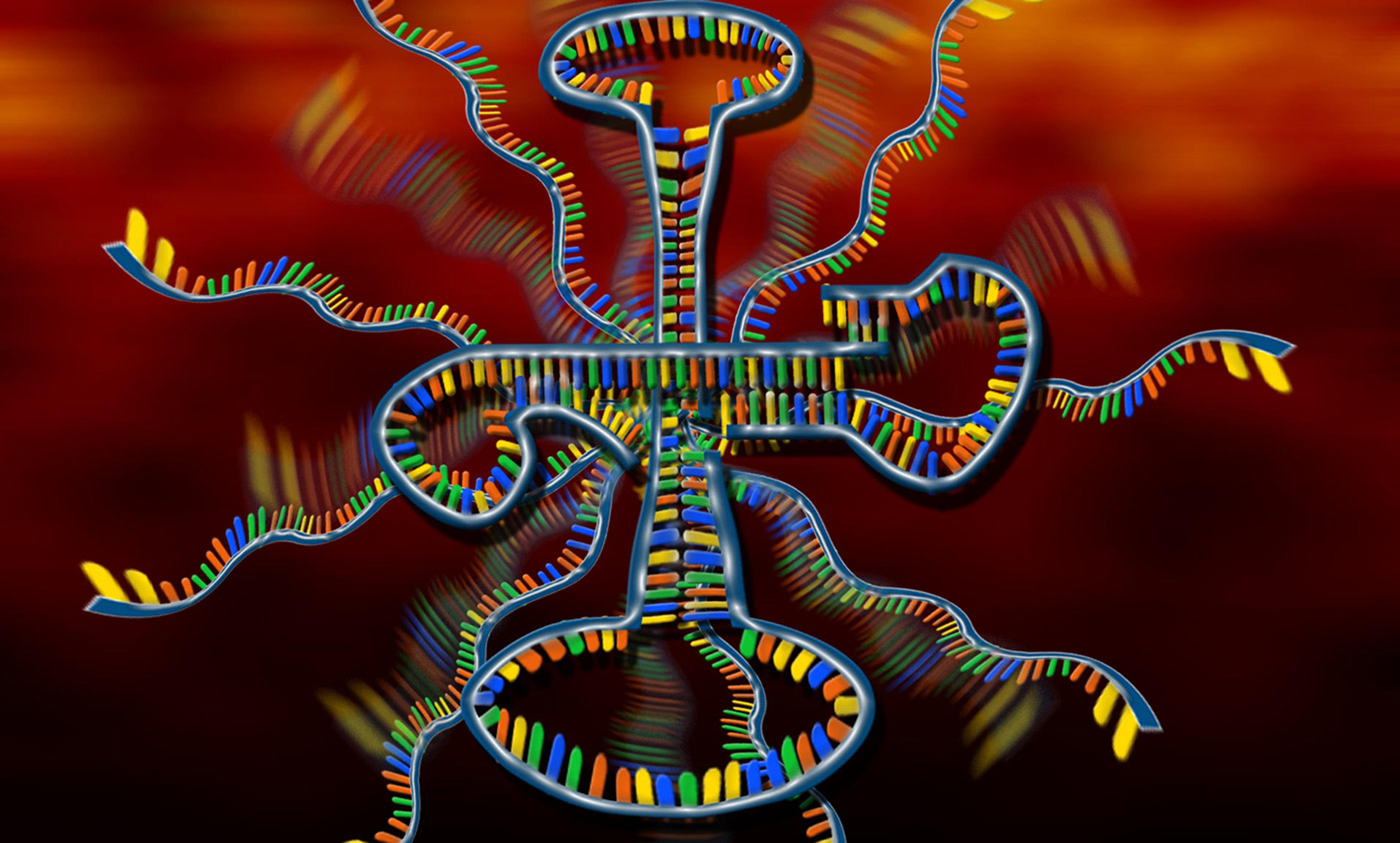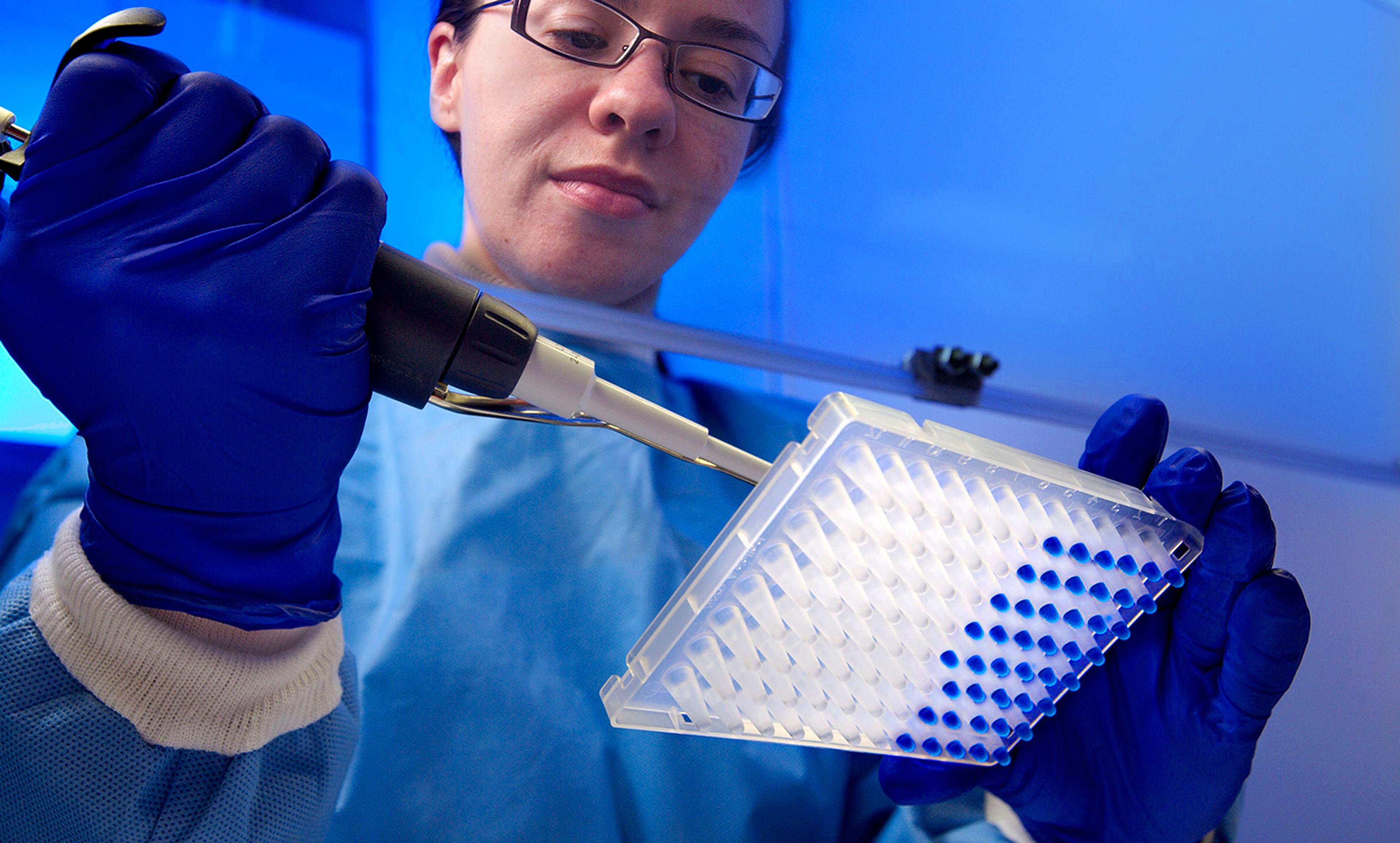The Chan Zuckerberg Initiative. Photo by Jeff Chiu/AP/REX
In late 2016, Facebook’s CEO Mark Zuckerberg and his wife Priscilla Chan pledged to invest at least $3 billion to ‘cure, manage and prevent all disease’ through the creation of a Biohub, a fount of non-profit innovation that would retain the exclusive right to commercialise its inventions. Around the same time, Microsoft said it had plans to ‘solve’ cancer by 2026 and Facebook’s co-founder Sean Parker promised $250 million (through his tax-exempt non-profit organisation, or 501c3) to fight cancer while retaining the right to patents. The philanthropists Eli Broad and Ted Stanley have contributed $1.4 billion in private wealth to fund the Broad Institute research centre (another 501c3, involved in a high-stakes patent battle) and its associated Stanley Center for Psychiatric Research, to open ‘schizophrenia’s black box’ and hack the genetics of psychiatry. Much like Andrew Carnegie and John D Rockefeller of yesteryear, who donated their wealth to build public libraries and establish foundations, today’s Silicon Valley billionaires seek a legacy, this time in the realm of health and disease.
But there is a disconnect. Comparing the body to a machine, complete with bugs to be fixed by means of gene modification tools such as Crispr-Cas9, conflicts with Charles Darwin’s theory of evolution: machines and computers do not evolve, but organisms do. Evolution matters here because bits of code that compromise one function often enhance a second function, or can be repurposed for a new function when the environment shifts. In evolution, everything is grasping for its purpose. Parts that break down can become the next best thing.
The element of evolutionary time can be lost on technologists who think that more data and money will end disease. For Darwin, evolution of a species depended on natural selection of the individual organism. Discovery of DNA later resulted in what became known as the ‘modern synthesis’, establishing a unifying framework for the influence of tiny things such as genes and large things such as populations, all while preserving Darwin’s key principle that selection hinged on the individual. By 1966, the evolutionary biologists Richard Lewontin and John Hubby had proposed the concept of ‘balancing selection’, which suggests that rare versions of genes can stay in a population since they add to genetic diversity. In fact, being heterogeneous, or having a single copy of a rarer form of a gene, even one that is suboptimal or contributes to genetic risk, can often benefit an individual, thus remaining among a species in small frequencies.
The theoretical biologist Stuart Kauffman argued that rare genetic variants are the basis of innovation, and may remain in circulation, not by chance, but because they add a fitness benefit to the system of at least a small number of organisms in a population. ‘Evolution is not just “chance caught on a wing”. It is not just a tinkering of the ad hoc, of bricolage, of contraption. It is emergent order honoured and honed by selection,’ he wrote in The Origins of Order (1993).
By contrast, a modern data scientist often assumes the reductionist position: that more data and better analysis in biology will lead to problems solved. As the molecular biologist James Watson said in 1989: ‘We used to think that our fate was in our stars, but now we know that, in large measure, our fate is in our genes.’ One reason we might favour this explanation is that our brains are wired to seek answers, simple cause-effect relationships. But we have so few drugs and solutions nearly two decades after sequencing the human genome. This might have less to do with the quality of analysis and more to do with the biological principles of evolution and time. Instead of thinking of humanity as a closed system, we’d do better to look through the open lens of ecology, in which the system itself is subject to influence by input from the outside. In even a single lifetime, our bodies take on an onslaught of genetic mutations, hundreds of trillions of synaptic connections rewire our brains by the moment, and pathogens bombard us, penetrating the organs and blood-brain barrier, and creating an ever-changing microbiome that enhances or erodes health.
In evolution, nothing comes for free. Stress can both trigger creativity and compound a raft of chronic maladies. Genetic variants that cause cystic fibrosis can protect against cholera, and those that contribute to Tay-Sachs can protect against tuberculosis. A variant in the gene PCSK9 can lower your LDL cholesterol, but can increase your risk for ischemic stroke. Gene transfer can effectively treat diseases caused by a single errant gene, but risk variants that influence diseases won’t go away because they often provide advantages as time goes on.
Even cancer is less a machine with cell circuits that go haywire than an evolving entity that undergoes evolution and change in real time. Shapeshifting tricks that enable a cancer to escape our treatment can be independent of changes to the permanent genetic code. One of the reasons that the immunotherapeutic approach has been so practical is that it treats cancer in terms of ecology. The cancer evolves, but the immune system, primed for that kind of fight, can sometimes keep pace.
Darwin introduced a viewpoint that was radically unsettling: we don’t progress to a more perfect form, but adapt to local environments. If humans are machines, then we can simply repair the broken parts. But if there is something more fundamental to the crisis of life than mere mechanisms of biology, then risk, and an element of danger, will always be with us. I will wager something even more: since genetic variation is the basis of innovation, and diversity, making ourselves too perfect could mean our doom.
